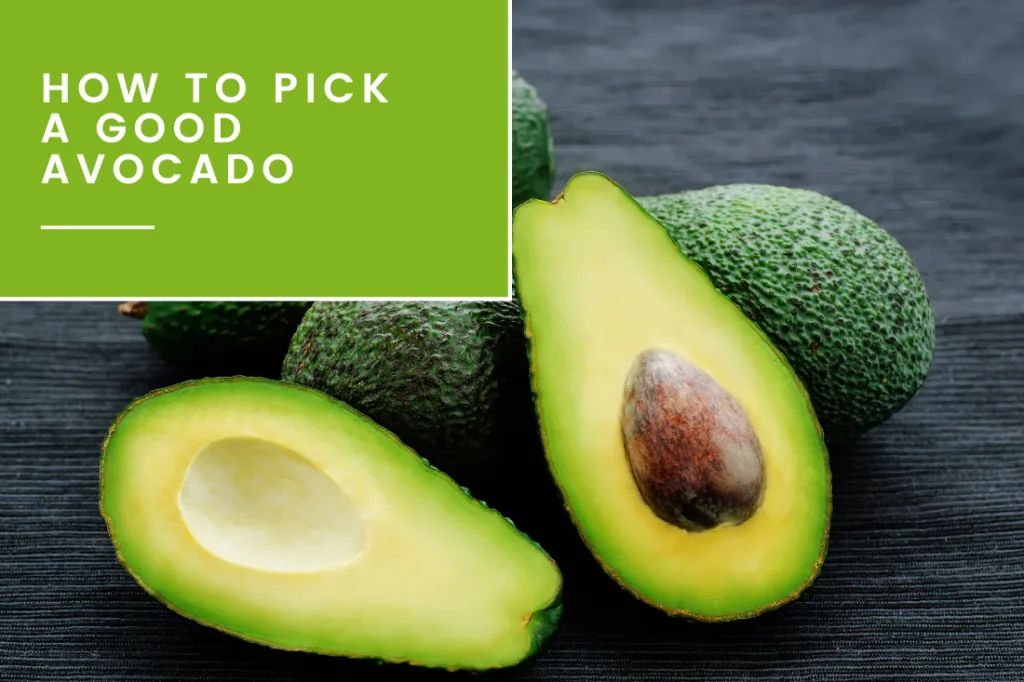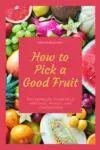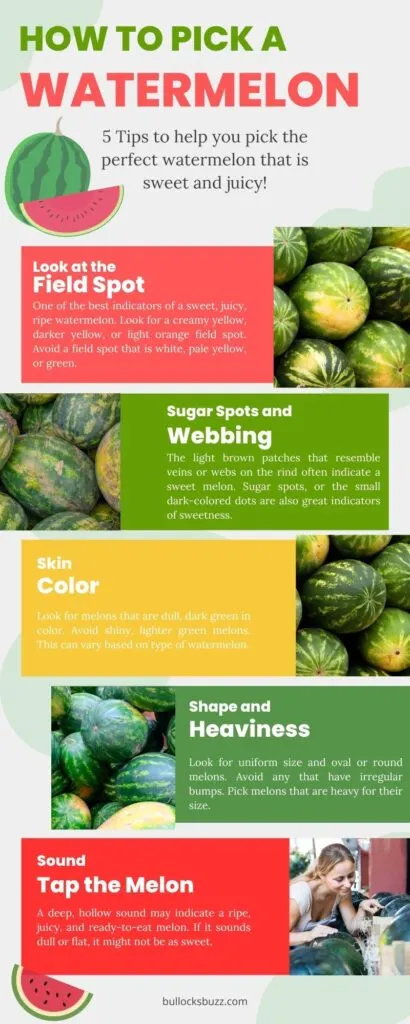This post contains affiliate links. I only recommend products I use and love. Read the full disclosure here
Last Updated on June 17, 2024 by Alaina Bullock
Summer is here, and with it comes the delicious delight of perfectly ripe fruit. There’s nothing quite like biting into a perfectly ripe fruit on a hot, sunny summer day. Whether you’re eating it on its own or in a tropical delight like my Pineapple Boat Fruit Salad, knowing how to pick a good fruit can make all the difference.
So today I am sharing some tried-and-true tips that will help you pick the best fruit every time! From watermelon to pineapple, avocado, mango, and cantaloupe, here’s your ultimate guide on how to pick a good fruit!

How to Pick a Good Watermelon
It’s hard to beat the sweet, juicy delight of a perfectly ripe watermelon on a hot summer’s day! But selecting the right one can sometimes feel like a gamble. Nothing is more disappointing than thinking you’ve got the perfect watermelon, only to cut it open and find it unsweet or tasteless.

Peak watermelon season runs from May to August in the United States. When it comes to how to pick a good watermelon, use these tips to help ensure you pick the best watermelon every time:
- Shape: Look for a watermelon that is a uniform size and oval or round. Avoid any that have irregular bumps.
- Field Spot: This is one of the best indicators of a sweet, juicy, ripe watermelon. A field spot is the result of the watermelon sitting on the ground. The longer it sits on the vine in the sun the sweeter it becomes. A creamy yellow, darker yellow, or light orange field spot usually means it was on the vine longer and is now full of flavor. A field spot that is white, pale yellow, or green, indicates that the watermelon may not be ripe yet. Avoid an all-green watermelon as it was picked too soon.
- Webbing and Sugar Spots: Webbing refers to the light brown patches that resemble veins or webs on the rind. Sugar spots are the small dark-colored dots – both are great indicators of sweetness.
- Skin: Look for a watermelon that has a dull, dark green color. Avoid a pale and/or shiny melon as it can mean the fruit is underripe. Also, avoid any watermelons with soft spots, cuts, dents, cracks, or other signs of damage.
- Heaviness: Choose a melon that is heavy for its size. This usually means it will be sweeter and will have more water content.
- Sound: Some people swear by sound for telling sweetness. I’ve been doing it my whole adult life! Does it always work? No. But I would say that 85% of the time, when used with the other tips, it does! Give the melon a good tap. A deep, hollow sound means it’s ripe, juicy, and ready to eat. If it sounds dull or flat, it might not be as sweet.

How to Pick a Good Pineapple
Nothing says tropical paradise like a juicy, sweet pineapple. But how do you make sure you’re picking the ripest one? You want to pay attention to things like its smell, weight, firmness, and leaves. Here are some simple tips to guide you so you know how to pick a good pineapple:
- Smell the Base: The base of a pineapple should have a slightly sweet and fruity smell. Too strong of a smell and it is over-ripe. A sweet aroma at the base indicates ripeness. If it doesn’t smell like anything, it might not be ripe.
- Check the Color: A ripe pineapple will have a nice golden yellow color, with or without some visible green parts, as well. Avoid those that are too green, burnt orange, or overly brown. The leaves should be vibrant green.
- Feel the Texture: A pineapple should be firm but yield slightly to pressure. If it’s too hard, it’s not ripe; too soft means overripe. It should also feel heavy, not hollow.
- Pull a Leaf: This one hasn’t failed me yet! Pull on a leaf toward the center of the crown. It should come out with a gentle tug. If it doesn’t the pineapple may not be ripe enough to be sweet.

How to Pick a Good Avocado: How to Pick a Good Fruit
People often wonder if avocado is a fruit or vegetable. Belive it or not, it is a fruit! A perfectly ripe avocado is a game-changer for salads, sandwiches, and, of course, Homemade Guacamole. Here are some tips on how to pick a good avocado:
- Look at the Skin: A good, ready-to-eat avocado will have dark skin, ranging from very dark green to dark brown to eggplant purple – depending on the variety. lighter colors are not yet ripe.
- Feel the Texture: The skin on a ripe avocado will have a very bumpy texture whereas unripe avocados have smoother/softer skin.
- Firmness: A good avocado should also be firm but yield to gentle pressure. If it’s too hard, it’s not ripe; if it’s too soft or mushy, that means it is overripe.
- Avoid Bruises: Soft spots often indicate overripe or damaged fruit. If your fingers leave indentations when testing firmness, look for another.
- Heaviness: Choose avocados that feel heavy for their size.
Pro Tip: If you are buying avocados to eat in 3-4 days, choose the ones with the firmer-feeling skins.

How to Pick a Good Mango
Mangoes are a delicious, versatile fruit, perfect for everything from smoothies to salsas. Howevr finding a good mango can be a bit of a challenge. This is because mangoes come in different colors, shapes, and sizes, depending on the variety.
So when choosing a good mango you want to rely more on feel and smell than anything – unless you know the exact variety you are checking. It also helps to use your experience picking peaches and avocados as mangos often become softer as they ripen.
Here are some general tips on how to pick a good mango:
- Check the Firmess: Although mangoes can be enjoyed at any ripeness stage, you can still give it the gentle squeeze test. A ripe mango will give slightly, a medium-ripe mango will be somewhat firm, and an unripe mango will be very firm. I like a mango that is slightly soft to the touch, and not too hard or mushy.
- Smell the Stem End: Ripe mangos will often have a fruity aroma at their stems. No smell means it’s not ripe; a sour smell means it’s overripe.
- Check Smoothness of Skin: An unripe mango will typically have a smooth outer surface with very few wrinkles or blemishes. Wrinkled skin can indicate overripeness. Skin that is just beginning to have a few shallow wrinkles can indicate a good mango.
- Check the Shape: A plump, round shape is best. Avoid flat or overly elongated shapes.
Pro Tip: Familiarize yourself with the different mango varieties and what to look for in each one. This way, once you are at the store, you can identify the variety and find a good mango based on that specific variety’s characteristics.

How to Pick a Good Cantaloupe: How to Pick a Good Fruit
Cantaloupes are a summer staple, offering a sweet, refreshing flavor. Here’s how to pick a good fruit that is sweet, juicy, and full of flavor.
Look at the Color: A ripe cantaloupe will have a light creamy, beige color. Green undertones indicate it’s not ripe.
Feel the Texture: A ripe canteloupe will have rough and net-like skin. If the skin is smooth, it’s not ripe.
Smell: Place the “button” or flower end just under your nose and smell. A strong sweet aroma indicates the cantaloupe is ready. No smell means it’s not ripe.
Give It A Light Squeeze: A ripe canteloupe should give slightly when pressed, feeling firm without being rock-hard. If it is too soft it means the melon is overripe.
Check for Soft Spots: A few small soft spots are OK as long as the rest of the canteloupe is still a bit firm. If there are many soft spots, it is most likely too ripe.
Check the Weight: A ripe canteloupe will feel heavy for its size indicating juiciness. If it’s light or feels hollow,
Knowing how to pick a good fruit doesn’t have to be a guessing game. By following these simple tips, you can confidently select the juiciest watermelon, the sweetest pineapple, the creamiest avocado, the ripest mango, and the most flavorful cantaloupe.
Happy fruit picking and I hope you enjoy the sweet rewards of your efforts!


